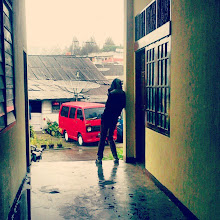1. Yao Defen ( 7ft 8in - 233 cm)
Yao Defen saat ini dianggap sebagai wanita tertinggi di dunia dengan tinggi mencapai 233 cm. Beratnya 200 kg dan kakinya berukuran 78 (EU) atau 26 (UK). Gejala gigantisme yang dideritanya disebabkan karena adanya sebuah tumor di kelenjar bagian bawah otaknya.
2. Sandy Allen (7ft 7¼in - 232 cm)
Sandy Allen muncul dalam buku the Guinness Book of World Records sejak 1976 hingga 2008, saat dia meninggal - sebagai wanita tertinggi di dunia. Tingginya mencapai 232 cm.
3. Malgorzata Dydek (7ft 2in - 218 cm)
Malgorzata (aka Margo) Dydek, seorang pemain basket di Amerika , tingginya mencapai 218 cm.
4.Zainab Bibi (7ft 2in - 218 cm)
Gambar nya nggk ketemu
5.Uljana Semjonova (7ft - 213 cm)
Tingginya mencapai 213 cm, Uljana Semjonova asal Latvia merupakan pemain basket terkenal di dunia pada masanya, antara tahun 1970 - 1980-an
6. Gitika Srivastava (6ft 11in - 211 cm)
Gitika Srivastava, seorang pemain basket Amerika yang berasal dari India, tingginya mencapai 211 cm.
7. Malee Duangdee (6ft 10in - 208 cm)
Malee Duangdee , wanita jangkung dengan tinggi 208 cm ini berasal dari Thailand.
8. Caroline Welz (6ft 9in - 206 cm)
Inilah wanita tertinggi di Jerman, Caroline Welz (20 tahun) dengan tinggi 206 cm.
9. Rita Miniva Besa (6ft 8in -203 cm)
Rita tinggal di Amerika Serikat, sementara aslinya berasal dari Zambia, tingginya 203 cm.
10. Heather Greene (6ft 5½in - 196 cm)
Heather Greene, tinggal di Las Vegas, tingginya "cuma" 196 cm.
»» READMORE...
Yao Defen saat ini dianggap sebagai wanita tertinggi di dunia dengan tinggi mencapai 233 cm. Beratnya 200 kg dan kakinya berukuran 78 (EU) atau 26 (UK). Gejala gigantisme yang dideritanya disebabkan karena adanya sebuah tumor di kelenjar bagian bawah otaknya.
2. Sandy Allen (7ft 7¼in - 232 cm)
Sandy Allen muncul dalam buku the Guinness Book of World Records sejak 1976 hingga 2008, saat dia meninggal - sebagai wanita tertinggi di dunia. Tingginya mencapai 232 cm.
3. Malgorzata Dydek (7ft 2in - 218 cm)
Malgorzata (aka Margo) Dydek, seorang pemain basket di Amerika , tingginya mencapai 218 cm.
4.Zainab Bibi (7ft 2in - 218 cm)
Gambar nya nggk ketemu
Zainab Bibi, (218 cm), saat ini tinggal di Inggris karena merasa kehidupannya terganggu di kampung halamannya, Pakistan.
5.Uljana Semjonova (7ft - 213 cm)
Tingginya mencapai 213 cm, Uljana Semjonova asal Latvia merupakan pemain basket terkenal di dunia pada masanya, antara tahun 1970 - 1980-an
6. Gitika Srivastava (6ft 11in - 211 cm)
Gitika Srivastava, seorang pemain basket Amerika yang berasal dari India, tingginya mencapai 211 cm.
7. Malee Duangdee (6ft 10in - 208 cm)
Malee Duangdee , wanita jangkung dengan tinggi 208 cm ini berasal dari Thailand.
8. Caroline Welz (6ft 9in - 206 cm)
Inilah wanita tertinggi di Jerman, Caroline Welz (20 tahun) dengan tinggi 206 cm.
9. Rita Miniva Besa (6ft 8in -203 cm)
Rita tinggal di Amerika Serikat, sementara aslinya berasal dari Zambia, tingginya 203 cm.
10. Heather Greene (6ft 5½in - 196 cm)
Heather Greene, tinggal di Las Vegas, tingginya "cuma" 196 cm.












